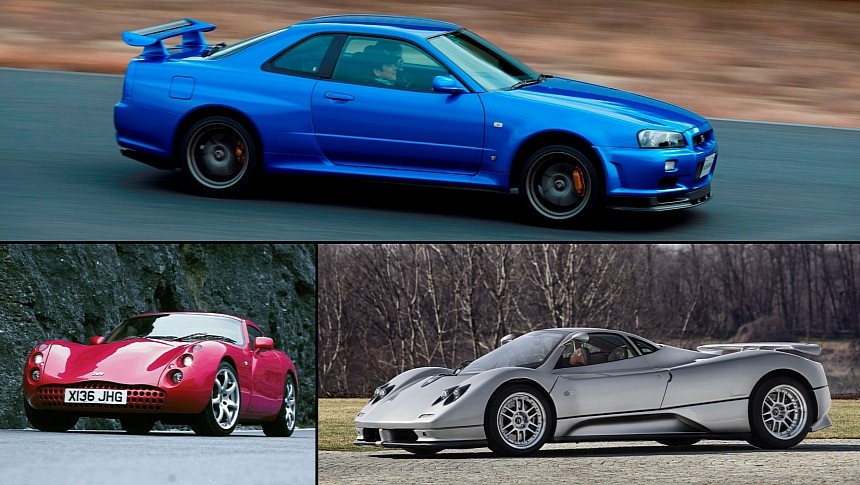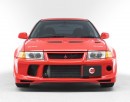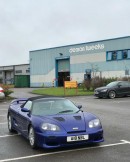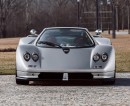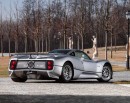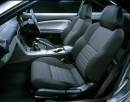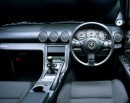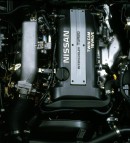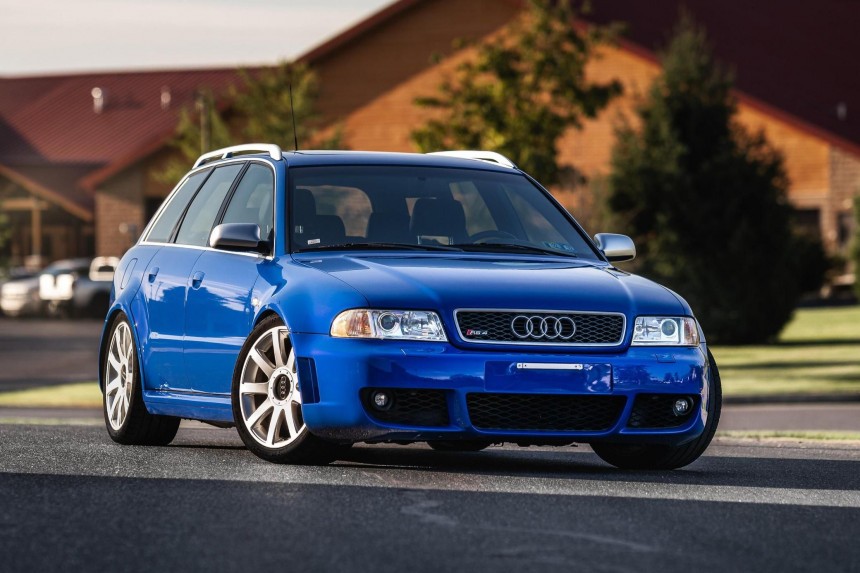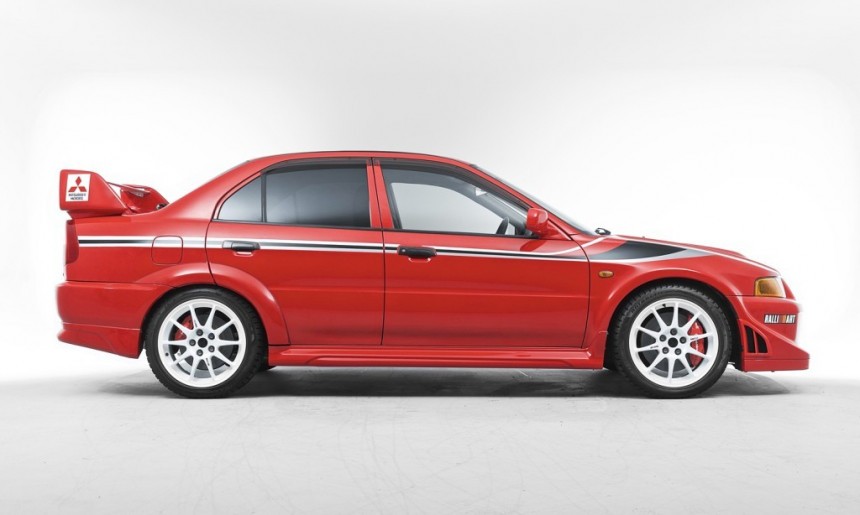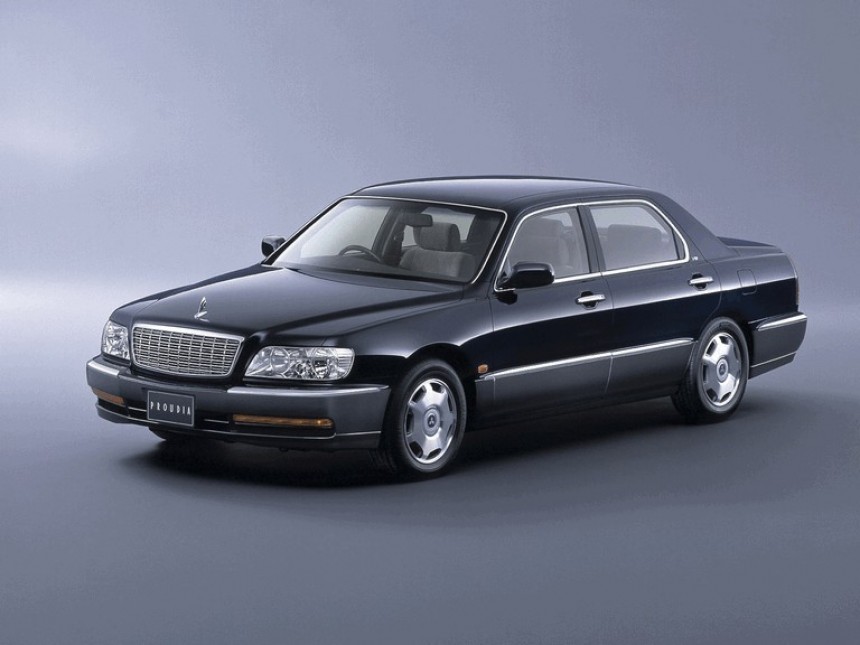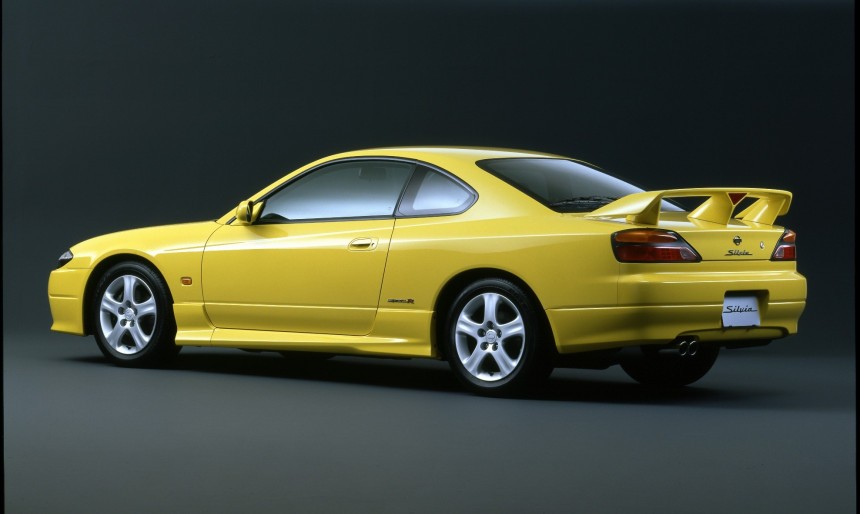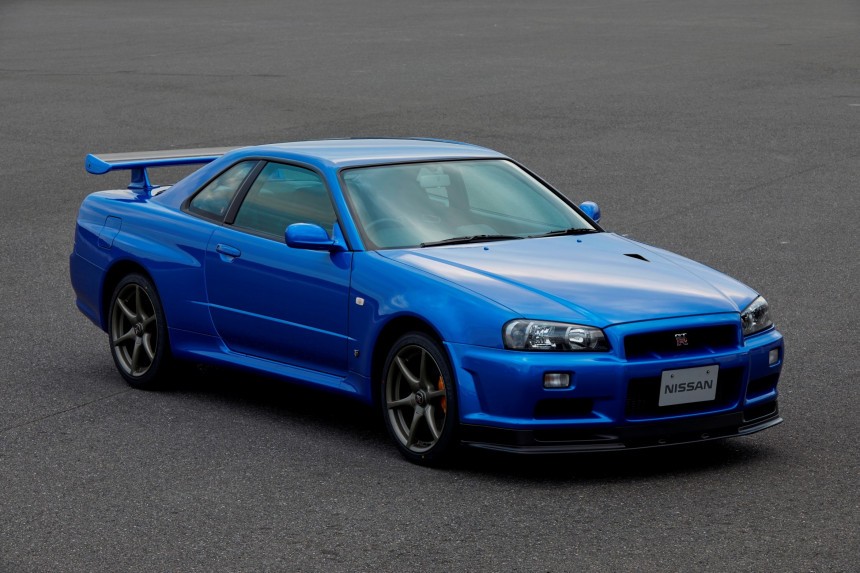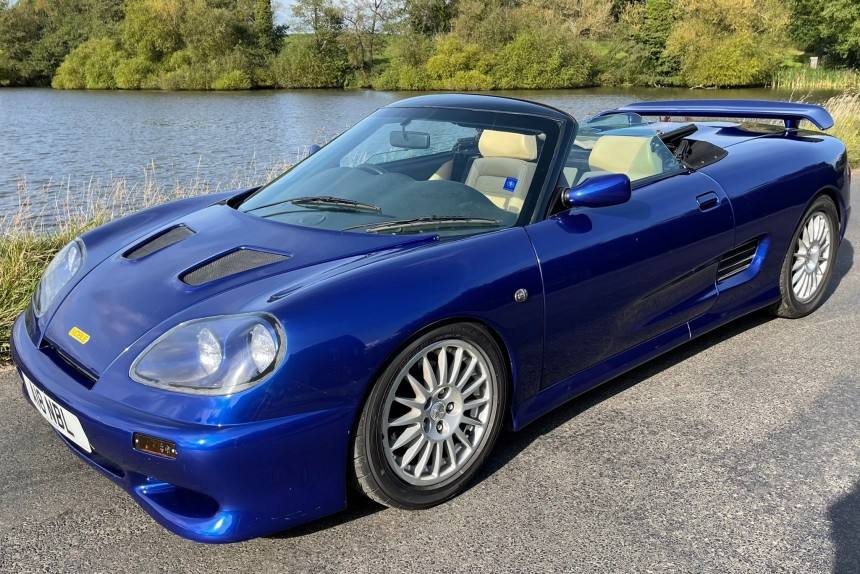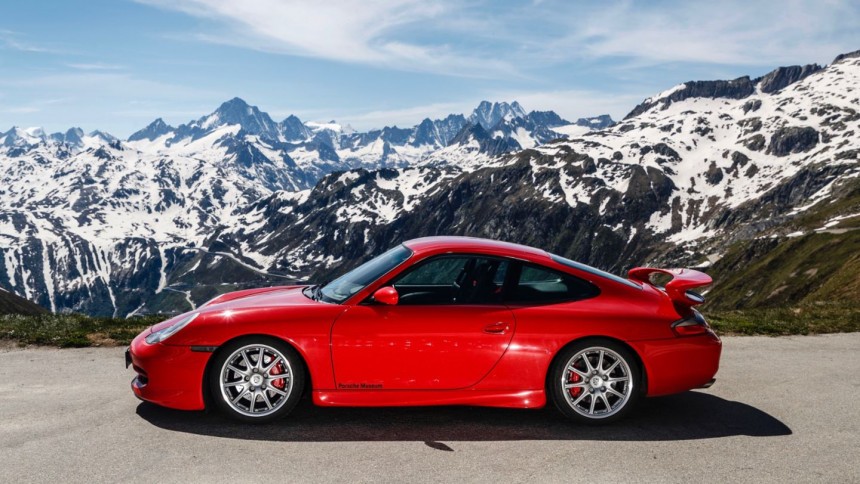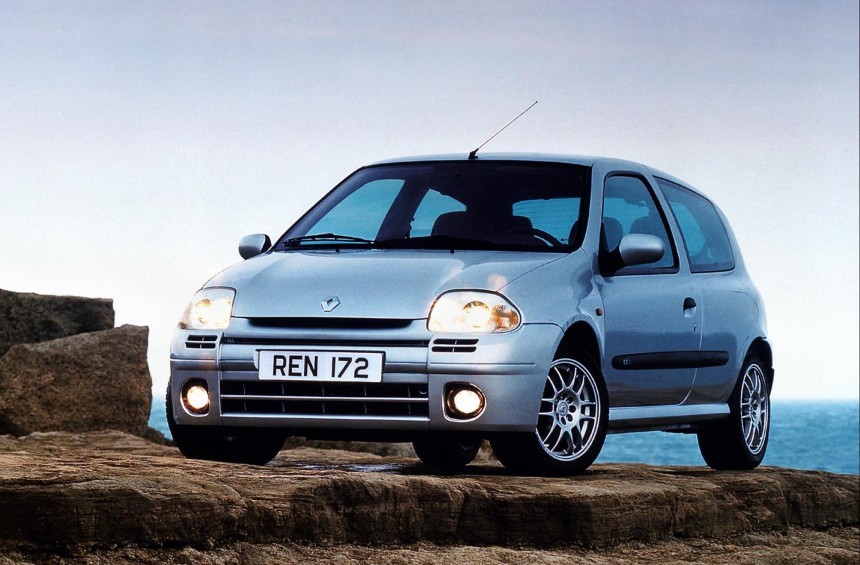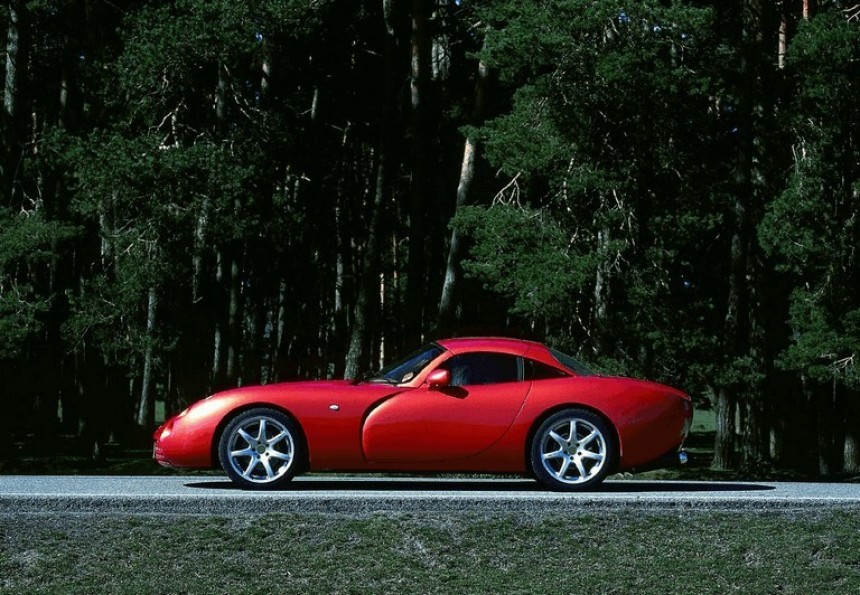Back in 1989, the National Highway Traffic Safety Administration made gray imports legal, but only as long as the imported vehicle is at least 25 years old. The NHTSA's website clearly states that the 25-year period runs from the date of the car's manufacture.
The manufacturing date can be pinpointed in a number of ways, beginning with a label affixed to the vehicle by the manufacturer. An invoice that shows when the vehicle was first sold will make do as well. The last resort would be a registration document showing that the vehicle was registered at least 25 years ago, which brings us to the year Blink 182 released Enema of the State. Feeling old yet?
Britney's debut album was released at the beginning of 1999 as well, the year that also gave us The Slim Shady LP from Eminem, Significant Other from Limp Bizkit, Hours by David Bowie, Issues from Korn, and There Is Nothing Left To Lose from the Foo Fighters. In the automotive realm, 1999 was full of interesting developments, including the first-ever BMW sport utility vehicle in the form of the E53 X5.
Peugeot launched the first mass-production diesel particulate filter in the 605-replacing 607, whose 2.2 HDi is a workhorse of an engine. The 607 launched in 1999 and nearly made our list of 25-year-old cars eligible to import stateside in 2024, but on the other hand, a front-wheel-drive sedan from a French brand won't make your heart beat faster on a curvy road. You could get a few curious looks at your local Cars & Coffee, but that's about it for the Six Cent Sept.
Forbidden fruits in the United States of America over the past quarter of a century, the following cars were never homologated for sale in the US of A. Ranging from a French hot hatch to a Japanese homologation special, a German performance wagon, and a V8 luxury sedan you probably never heard of, these are our top ten picks for this year.
B5 is Audi vernacular for the first-generation A4, which replaced the long-running 80 series that gave us the Porsche-built RS 2 Avant. Over in the United States, the most performance-oriented B5 ever offered was the S4. You can think of the wagon-only RS 4 as being a punchier S4, but that's not all…
Unleashed in September 1999 at the Frankfurt Motor Show, the first RS 4 is better described as the direct successor to the RS 2. Honed by the folks at quattro GmbH – now Audi Sport – in Neckarsulm, the sports wagon differs from the S4 in many areas, beginning with slightly wider tracks fore and aft.
The needlessly complicated twin-turbo V6 of the S4 was reworked by Cosworth with RS 4-specific injectors, pistons, camshafts, connecting rods, intake manifolds, bearings, and intercoolers. Instead of K03-type BorgWarner turbochargers, the RS 4 Avant received a pair of K04s. These modifications, along with the redesigned exhaust system, resulted in 375 horsepower and 325 pound-feet (440 Nm) as opposed to 261 and 295 (400) for the B5-gen S4.
The 2.7-liter six boasts five valves per cylinder, just like the oh-so-pretty Ferrari F355. Better still, this generation of the RS 4 came with a six-speed manual transmission exclusively. A little over 6,000 examples were finished in total, with production coming to a screeching halt in September 2001.
Born on the rally stage, yet far more attainable than a Lancia Stratos, the Lancer Evolution VI is a very different animal from the Ferrari-powered Stratos. Molded by Group A regulations, the sixth iteration of the Lancer Evolution features the very same 4,350-millimeter wheelbase as the previous gen.
Building on the wide-arched Evo V with better cooling and 275 pound-feet (373 Nm) of torque as opposed to 261 thanks to a new turbocharger, the Evo VI was advertised with 276 horsepower in Japan due to a gentlemen's agreement. To make a long story short, Japanese automakers limited their vehicles to 280 metric ponies or 276 mechanical ones between 1989 and 2004. The agreement fell through once Honda premiered the fourth-gen Legend, whose 3.5-liter V6 makes 300 ps/296 hp.
Lancer Evolutions IV through X were all rated at 276 horsepower, but everyone and their dog knows that Mitsubishi was sandbagging. The same applies to Nissan, whose R32 through R34 Skyline GT-R also produces 276 horsepower. On paper, that is…
The bi-plane rear wing is the easiest way of telling the Evo VI apart from the Evo V. The Lancer Evolution VI is the world's first production car with a titanium turbine, and Mitsubishi also worked its magic on rigidity with additional spot welds for the chassis. Oh, and who could forget the ultra-collectible Tommi Makinen Edition? In December 1999, when the special edition was revealed in Tokyo, the most revered Evo VI of them all used to retail at 2,598,000 yen for the RS trim level, meaning 2,809,270 yen with inflation and a scarcely believable 19,405 dollars at current exchange rates.
Intended to rival the Nissan President and Toyota Century, the Proudia is a weirdly named Mitsu that looks a decade older than it actually is. Essentially a shorter version of the comically named Dignity, the Proudia is – believe it or not – twinned with the first-gen Hyundai Equus. You know, the luxury sedan that was eventually replaced by the Genesis G90.
The lidar adaptive cruise control-equipped Proudia, which stands for proud and diamond, came in two main specifications. The so-called S33A is the better choice of the two, for it packs a 4.5-liter V8 as opposed to 3.5 liters and six cylinders for the S32A. Despite looking like a four-wheeled dinosaur on the outside, the Proudia S33A was thoroughly modern for 1999 under the hood. Its V8 engine flaunts gasoline direct injection, a technology that was cutting-edge for its time. Back in 1996, the Galant was the first production vehicle to feature GDI.
The Mitsubishi Proudia's top engine develops 280 ps (276 horsepower) and 412 Nm (304 pound-feet) of twist. Over at Hyundai, the technically similar G8AA can summon up to 260 ps (256 horsepower) and 380 Nm (281 pound-feet). For reference, the 1999 Lexus LS 400 has 294 ps (290 horsepower) and 407 Nm (300 pound-feet) to offer from 4.0 liters.
In stark contrast to the LS 400, the Proudia didn't sell in large quantities. Not even two years after the Proudia's introduction, Mitsubishi pulled the plug on it and the much rarer Dignity after failing to meet the forecasted 300 sales per month. The first-gen Proudia totaled 1,227 units, of which heaven only knows how many are in good shape today. Mitsubishi produced only 59 units of the Dignity.
Originally marketed as the Datsun Coupe 1600 after its two-door body style and 1.6-liter OHV inline-four mill, the Silvia was updated time and time again over the years. Revealed in January 1999, the final generation was offered for three years in total.
To this day, the S15 is held in high regard by enthusiasts for its precise handling, usable performance, and tuning potential. No wonder the S15 makes a great choice for drifting. Compared to the 240SX-branded S14 before it, Nissan couldn't make a case for the S15 in the United States.
Sold as the 200SX in Australia and New Zealand, the S15 came with either the SR20DE or SR20DET. As implied by the T, the latter version of the SR20 engine is turbocharged. In the Japanese market Silvia Spec-S, the free-breathing SR20DE cranks out a respectable 165 ps (162 horsepower) at 6,400 rpm and 192 Nm (142 pound-feet) at 4,800 rpm.
Further differentiated from the Spec-S with a strengthened chassis and suspension, the Silvia Spec-R develops 250 ps (247 horsepower) and 275 Nm (203 pound-feet) of torque. S15 production totaled just over 43,100 units. Most of them were sold in Japan. The Japanese market also got the highly collectible Silvia Varietta convertible.
Easily the hottest import car in 2024 under the 25-year rule, the R34 is the stuff of legends. Even models equipped with the RB20DE sixer are desirable, let alone those with the RB25DET or the GT-R-specific RB26DETT twin-turbo inline-six.
Shorter in both overall length and wheelbase than the R33, the R34 is rarer as well. Between January 1999 and August 2002, precisely 11,578 examples were produced. Gifted with an LCD multifunction display in the center of the dashboard, the GT-R was launched alongside the higher-performing V.Spec.
From the stiffer suspension and better aero to the ATTESA E-TS Pro and active limited-rear differential, everyone and their dog knows that the V.Spec is the better pick. The V.Spec N1 is a stripped-out homologation special with a better block and turbochargers. Then came the V.Spec II and V.Spec II N1, along with the M-Spec, V.Spec II Nur, and M-Spec Nur. The Z-Tune, however, is the holy grail of the R34-generation Skyline GT-R.
In addition to the prototype (chassis number BNR34P-001), a further 19 were produced (R34-Z-001 through R34-Z-019). Advertised with 500 ps (493 horsepower), the Z-Tune needs 3.8 seconds to reach 100 clicks (62 miles per hour), onto a top speed of 327 kilometers per hour (203 miles per hour).
Leeds-based Noble is a low-production automaker known for lightweight, engaging sports cars and supercars. Founder Lee Noble introduced the M10 in 1999, of which only a handful were produced because of the much improved Noble M12.
How many? Depending on your source, five to six, therefore making the M10 extremely hard to come by. The first production-intent prototype was last listed for sale in December 2021. Registered A18 NBL, the blue-painted car sold for £31,500 with 48,000 miles (77,249 kilometers) on the odo.
Said car was initially equipped with a four-cylinder lump, but Lee Noble ultimately upgraded it to a V6 with almost 170 ponies on deck. The powerplant in question is the Duratec 25, a sixer that wouldn't have happened without Porsche and Cosworth. The SHO V8 and the Aston Martin 5.9-liter V12 are related to the Duratec V6, which was killed off in 2012 for the Duratec-branded Cyclone and the EcoBoost.
168 horsepower may not seem like much, but as it happens, the M10 is a very light car. With half a tank of gas (make that petrol in British English), the automaker's first model weighs only 960 kilograms (2,116 pounds). Care to guess how much a Miata used to weigh in 1999? In the US, the base Miata was listed at 2,299 pounds (1,043 kilograms).
It's hard to believe that Pagani's first car launched a quarter of a century ago. In a similar fashion to Maserati's classic models, the Zonda is named after a wind. Originally dubbed Fangio F1 after five-time F1 champion Juan Manuel Fangio, the V12-powered supercar was produced in limited quantities.
Similar to the Noble M10 and M12 from earlier, the 6.0-liter Zonda C12 was discontinued in favor of the more powerful 7.0-liter Zonda C12-S. Later on, the naturally aspirated V12 would be upped to 7.3 liters. We do know for certain that Horacio Pagani's company built precisely five units of the C12, beginning with chassis number 760001.
76001, together with 76002 and 76005, were finished in a shade of silver that pays homage to Merc's Group C racing cars. 76004 was optioned in exposed carbon fiber, whereas 76003 rolled off the assembly line in a bright shade of yellow.
Tipping the scales at 1,250 kilograms (2,756 pounds), the Zonda C12 established Pagani as a force to be reckoned with in the supersport segment. Through 2019, an estimated 140 units of the Zonda were produced at San Cesario sul Panaro.
The spiritual successor of the 911 Carrera RS from the 1970s, the first-gen 911 GT3 was a true homologation special. Although the 996.2 was available in the US for the 2004 model year, the 996.1 couldn't be had in North America.
Powered by a Mezger-designed 3.6 with 360 ps (355 horsepower) as opposed to 300 ps (296 horsepower) for the 911 Carrera, the 911 GT3 was a manual-only affair. In the 996.2, the 3.6-liter mill develops 380 ps or 375 mechanical horsepower.
Unveiled in March 1999, the track-oriented sports car earned its laurels before its world debut in Geneva. More specifically, none other than Walter Rohrl lapped the Nurburgring with a 996.1 in less than eight minutes. At the moment of writing, the fastest production car on the Nordschleife is the Mercedes-AMG ONE. In the hands of Maro Engel, the Formula 1 turbo V6-powered supercar needs 6:30.705 to cover the Ring's 20.8 kilometers.
Between 1999 and 2001, the German automaker produced 1,868 units of the 996.1-generation 911 GT3. The most coveted specification is the Clubsport, a go-faster package that includes a roll cage, a six-point harness for the driver, flame-retardant upholstery, a fire extinguisher, lightweight seats, and a battery main switch. The Clubsport package deletes the side airbags.
Renault Sport was born in 1976 by merging Alpine and Gordini. The French automaker's motorsport and performance division was reorganized into Alpine in 2021, and not long now, Renault Sport will breathe its last breath in favor of Alpine.
As far as the Clio is concerned, the Renault Sport arrived in 1999, nine years after the Clio was presented as the successor of the R5. Prior to the first-ever Clio RS, the company offered the limited-run Clio Williams. It is widely believed that 12,100 units were produced in total over three series.
More powerful than its forerunner (172 ps or 170 hp versus 147 ps or 145 hp), the Clio RS differs from lesser versions of the subcompact hatchback in many respects. Think sporty bumpers, prominent side skirts, OZ alloy wheels, and wider arches.
Weighing a little over a metric ton, Renault's first-ever Clio RS immediately resonated with those in the market for a small, practical, and sporty hatchback. Sometimes referred to as Clio RS 172 after its metric output, the original would be replaced by the 182, followed by the 197, 200, and 220. Neither in name nor spirit, the Clio RS isn't coming back because an Alpine electric hatchback based on the new R5 is right around the corner.
Powered by the aurally superb Speed Six engine, the fiberglass-bodied TVR Tuscan Speed Six spawned 1,677 specimens through 2006. Not to be confused with the first-gen Tuscan from 1967 through 1971, the Tuscan Speed Six is a very exotic-looking car by British sports car standards.
Initially offered as a targa top, the six-cylinder brute from Blackpool made its debut with 350 horsepower from a displacement of 3.6 liters. The 4.0-liter version levels up to anything between 360 and 400 horsepower. The facelift launched in late 2005, and with it, TVR expanded the lineup with a soft-top version of the Tuscan Speed Six. 2005 also saw the debut of the coupe-only TVR Sagaris, of which 211 examples of the breed were produced.
It's nigh-on impossible to find a Tuscan Speed Six in original condition these days, and that's due to the British marque's notorious reliability woes. Be it a rebuilt engine, transmission, or uprated ancillaries, this shouldn't be of any concern because TVR owners sure like to spoil their cars rotten.
AutoTrader UK currently lists 11 cars available for purchase, with prices ranging between 21,000 and 44,950 pounds sterling, meaning 26,815 to 57,400 dollars. Not bad, especially when compared to the starting price of a modern-day sports car with a six-cylinder engine up front. For reference, the Toyota GR Supra 3.0-twinned BMW Z4 M40i starts at £57,295 in the UK or $53,600 in the US of A.
Britney's debut album was released at the beginning of 1999 as well, the year that also gave us The Slim Shady LP from Eminem, Significant Other from Limp Bizkit, Hours by David Bowie, Issues from Korn, and There Is Nothing Left To Lose from the Foo Fighters. In the automotive realm, 1999 was full of interesting developments, including the first-ever BMW sport utility vehicle in the form of the E53 X5.
Peugeot launched the first mass-production diesel particulate filter in the 605-replacing 607, whose 2.2 HDi is a workhorse of an engine. The 607 launched in 1999 and nearly made our list of 25-year-old cars eligible to import stateside in 2024, but on the other hand, a front-wheel-drive sedan from a French brand won't make your heart beat faster on a curvy road. You could get a few curious looks at your local Cars & Coffee, but that's about it for the Six Cent Sept.
Forbidden fruits in the United States of America over the past quarter of a century, the following cars were never homologated for sale in the US of A. Ranging from a French hot hatch to a Japanese homologation special, a German performance wagon, and a V8 luxury sedan you probably never heard of, these are our top ten picks for this year.
Audi RS 4 Avant B5
Unleashed in September 1999 at the Frankfurt Motor Show, the first RS 4 is better described as the direct successor to the RS 2. Honed by the folks at quattro GmbH – now Audi Sport – in Neckarsulm, the sports wagon differs from the S4 in many areas, beginning with slightly wider tracks fore and aft.
The needlessly complicated twin-turbo V6 of the S4 was reworked by Cosworth with RS 4-specific injectors, pistons, camshafts, connecting rods, intake manifolds, bearings, and intercoolers. Instead of K03-type BorgWarner turbochargers, the RS 4 Avant received a pair of K04s. These modifications, along with the redesigned exhaust system, resulted in 375 horsepower and 325 pound-feet (440 Nm) as opposed to 261 and 295 (400) for the B5-gen S4.
The 2.7-liter six boasts five valves per cylinder, just like the oh-so-pretty Ferrari F355. Better still, this generation of the RS 4 came with a six-speed manual transmission exclusively. A little over 6,000 examples were finished in total, with production coming to a screeching halt in September 2001.
Mitsubishi Lancer Evolution VI
Building on the wide-arched Evo V with better cooling and 275 pound-feet (373 Nm) of torque as opposed to 261 thanks to a new turbocharger, the Evo VI was advertised with 276 horsepower in Japan due to a gentlemen's agreement. To make a long story short, Japanese automakers limited their vehicles to 280 metric ponies or 276 mechanical ones between 1989 and 2004. The agreement fell through once Honda premiered the fourth-gen Legend, whose 3.5-liter V6 makes 300 ps/296 hp.
Lancer Evolutions IV through X were all rated at 276 horsepower, but everyone and their dog knows that Mitsubishi was sandbagging. The same applies to Nissan, whose R32 through R34 Skyline GT-R also produces 276 horsepower. On paper, that is…
The bi-plane rear wing is the easiest way of telling the Evo VI apart from the Evo V. The Lancer Evolution VI is the world's first production car with a titanium turbine, and Mitsubishi also worked its magic on rigidity with additional spot welds for the chassis. Oh, and who could forget the ultra-collectible Tommi Makinen Edition? In December 1999, when the special edition was revealed in Tokyo, the most revered Evo VI of them all used to retail at 2,598,000 yen for the RS trim level, meaning 2,809,270 yen with inflation and a scarcely believable 19,405 dollars at current exchange rates.
Mitsubishi Proudia S33A
The lidar adaptive cruise control-equipped Proudia, which stands for proud and diamond, came in two main specifications. The so-called S33A is the better choice of the two, for it packs a 4.5-liter V8 as opposed to 3.5 liters and six cylinders for the S32A. Despite looking like a four-wheeled dinosaur on the outside, the Proudia S33A was thoroughly modern for 1999 under the hood. Its V8 engine flaunts gasoline direct injection, a technology that was cutting-edge for its time. Back in 1996, the Galant was the first production vehicle to feature GDI.
The Mitsubishi Proudia's top engine develops 280 ps (276 horsepower) and 412 Nm (304 pound-feet) of twist. Over at Hyundai, the technically similar G8AA can summon up to 260 ps (256 horsepower) and 380 Nm (281 pound-feet). For reference, the 1999 Lexus LS 400 has 294 ps (290 horsepower) and 407 Nm (300 pound-feet) to offer from 4.0 liters.
In stark contrast to the LS 400, the Proudia didn't sell in large quantities. Not even two years after the Proudia's introduction, Mitsubishi pulled the plug on it and the much rarer Dignity after failing to meet the forecasted 300 sales per month. The first-gen Proudia totaled 1,227 units, of which heaven only knows how many are in good shape today. Mitsubishi produced only 59 units of the Dignity.
Nissan Silvia S15
To this day, the S15 is held in high regard by enthusiasts for its precise handling, usable performance, and tuning potential. No wonder the S15 makes a great choice for drifting. Compared to the 240SX-branded S14 before it, Nissan couldn't make a case for the S15 in the United States.
Sold as the 200SX in Australia and New Zealand, the S15 came with either the SR20DE or SR20DET. As implied by the T, the latter version of the SR20 engine is turbocharged. In the Japanese market Silvia Spec-S, the free-breathing SR20DE cranks out a respectable 165 ps (162 horsepower) at 6,400 rpm and 192 Nm (142 pound-feet) at 4,800 rpm.
Further differentiated from the Spec-S with a strengthened chassis and suspension, the Silvia Spec-R develops 250 ps (247 horsepower) and 275 Nm (203 pound-feet) of torque. S15 production totaled just over 43,100 units. Most of them were sold in Japan. The Japanese market also got the highly collectible Silvia Varietta convertible.
Nissan Skyline GT-R R34
Shorter in both overall length and wheelbase than the R33, the R34 is rarer as well. Between January 1999 and August 2002, precisely 11,578 examples were produced. Gifted with an LCD multifunction display in the center of the dashboard, the GT-R was launched alongside the higher-performing V.Spec.
From the stiffer suspension and better aero to the ATTESA E-TS Pro and active limited-rear differential, everyone and their dog knows that the V.Spec is the better pick. The V.Spec N1 is a stripped-out homologation special with a better block and turbochargers. Then came the V.Spec II and V.Spec II N1, along with the M-Spec, V.Spec II Nur, and M-Spec Nur. The Z-Tune, however, is the holy grail of the R34-generation Skyline GT-R.
In addition to the prototype (chassis number BNR34P-001), a further 19 were produced (R34-Z-001 through R34-Z-019). Advertised with 500 ps (493 horsepower), the Z-Tune needs 3.8 seconds to reach 100 clicks (62 miles per hour), onto a top speed of 327 kilometers per hour (203 miles per hour).
Noble M10
How many? Depending on your source, five to six, therefore making the M10 extremely hard to come by. The first production-intent prototype was last listed for sale in December 2021. Registered A18 NBL, the blue-painted car sold for £31,500 with 48,000 miles (77,249 kilometers) on the odo.
Said car was initially equipped with a four-cylinder lump, but Lee Noble ultimately upgraded it to a V6 with almost 170 ponies on deck. The powerplant in question is the Duratec 25, a sixer that wouldn't have happened without Porsche and Cosworth. The SHO V8 and the Aston Martin 5.9-liter V12 are related to the Duratec V6, which was killed off in 2012 for the Duratec-branded Cyclone and the EcoBoost.
168 horsepower may not seem like much, but as it happens, the M10 is a very light car. With half a tank of gas (make that petrol in British English), the automaker's first model weighs only 960 kilograms (2,116 pounds). Care to guess how much a Miata used to weigh in 1999? In the US, the base Miata was listed at 2,299 pounds (1,043 kilograms).
Pagani Zonda C12
Similar to the Noble M10 and M12 from earlier, the 6.0-liter Zonda C12 was discontinued in favor of the more powerful 7.0-liter Zonda C12-S. Later on, the naturally aspirated V12 would be upped to 7.3 liters. We do know for certain that Horacio Pagani's company built precisely five units of the C12, beginning with chassis number 760001.
76001, together with 76002 and 76005, were finished in a shade of silver that pays homage to Merc's Group C racing cars. 76004 was optioned in exposed carbon fiber, whereas 76003 rolled off the assembly line in a bright shade of yellow.
Tipping the scales at 1,250 kilograms (2,756 pounds), the Zonda C12 established Pagani as a force to be reckoned with in the supersport segment. Through 2019, an estimated 140 units of the Zonda were produced at San Cesario sul Panaro.
Porsche 911 GT3 996.1
Powered by a Mezger-designed 3.6 with 360 ps (355 horsepower) as opposed to 300 ps (296 horsepower) for the 911 Carrera, the 911 GT3 was a manual-only affair. In the 996.2, the 3.6-liter mill develops 380 ps or 375 mechanical horsepower.
Unveiled in March 1999, the track-oriented sports car earned its laurels before its world debut in Geneva. More specifically, none other than Walter Rohrl lapped the Nurburgring with a 996.1 in less than eight minutes. At the moment of writing, the fastest production car on the Nordschleife is the Mercedes-AMG ONE. In the hands of Maro Engel, the Formula 1 turbo V6-powered supercar needs 6:30.705 to cover the Ring's 20.8 kilometers.
Between 1999 and 2001, the German automaker produced 1,868 units of the 996.1-generation 911 GT3. The most coveted specification is the Clubsport, a go-faster package that includes a roll cage, a six-point harness for the driver, flame-retardant upholstery, a fire extinguisher, lightweight seats, and a battery main switch. The Clubsport package deletes the side airbags.
Renault Clio RS 172
As far as the Clio is concerned, the Renault Sport arrived in 1999, nine years after the Clio was presented as the successor of the R5. Prior to the first-ever Clio RS, the company offered the limited-run Clio Williams. It is widely believed that 12,100 units were produced in total over three series.
More powerful than its forerunner (172 ps or 170 hp versus 147 ps or 145 hp), the Clio RS differs from lesser versions of the subcompact hatchback in many respects. Think sporty bumpers, prominent side skirts, OZ alloy wheels, and wider arches.
Weighing a little over a metric ton, Renault's first-ever Clio RS immediately resonated with those in the market for a small, practical, and sporty hatchback. Sometimes referred to as Clio RS 172 after its metric output, the original would be replaced by the 182, followed by the 197, 200, and 220. Neither in name nor spirit, the Clio RS isn't coming back because an Alpine electric hatchback based on the new R5 is right around the corner.
TVR Tuscan Speed Six
Initially offered as a targa top, the six-cylinder brute from Blackpool made its debut with 350 horsepower from a displacement of 3.6 liters. The 4.0-liter version levels up to anything between 360 and 400 horsepower. The facelift launched in late 2005, and with it, TVR expanded the lineup with a soft-top version of the Tuscan Speed Six. 2005 also saw the debut of the coupe-only TVR Sagaris, of which 211 examples of the breed were produced.
It's nigh-on impossible to find a Tuscan Speed Six in original condition these days, and that's due to the British marque's notorious reliability woes. Be it a rebuilt engine, transmission, or uprated ancillaries, this shouldn't be of any concern because TVR owners sure like to spoil their cars rotten.
AutoTrader UK currently lists 11 cars available for purchase, with prices ranging between 21,000 and 44,950 pounds sterling, meaning 26,815 to 57,400 dollars. Not bad, especially when compared to the starting price of a modern-day sports car with a six-cylinder engine up front. For reference, the Toyota GR Supra 3.0-twinned BMW Z4 M40i starts at £57,295 in the UK or $53,600 in the US of A.
